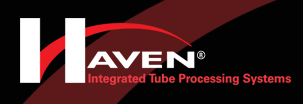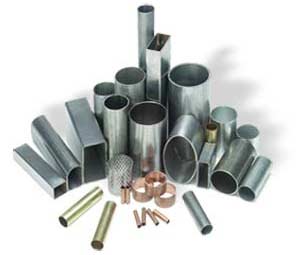Introduction
Efficient and high-quality production processes are essential in today’s competitive industries. Tube deburring machines are vital in optimizing manufacturing processes by removing burrs and improving product functionality, aesthetics, and safety. These specialized machines automate the deburring process, enhancing efficiency and accelerating production rates.
As a result of these machines, manufacturers can allocate resources more effectively by eliminating manual errors and labor-intensive tasks. Additionally, tube deburring machines ensure product quality by eliminating burrs, sharp edges, and surface imperfections, resulting in visually appealing and hazard-free products. Integrating these machines into manufacturing processes is a key strategy for staying competitive.
Understanding Tube Deburring
Tube deburring removes burrs from tubes, which are unwanted rough edges, ridges, or protrusions. The primary purpose of deburring is to eliminate imperfections and enhance the functionality of the tubes. By removing burrs, manufacturers ensure that the tubes meet the required quality, performance, and safety standards.
The importance of deburring in the manufacturing process cannot be overstated. Burrs can negatively impact product functionality in several ways. For instance, they can interfere with the proper fit and assembly of components, impede fluid flow in tubes, or cause damage to other parts of the machinery or equipment. Additionally, burrs can compromise the product’s aesthetics, diminishing its visual appeal and potentially affecting customer satisfaction.
Therefore, incorporating tube deburring machines into the manufacturing process is crucial. These machines automate the deburring process, offering consistent and precise removal of burrs. By eliminating burrs and achieving smooth tube surfaces, manufacturers can enhance product functionality, ensure proper fit and assembly, optimize fluid flow, and improve product quality.
Types of Tube Deburring Machines
There are several types of tube deburring machines, each with its own key features, applications, benefits, and limitations. We discuss many of the more popular types of tube deburring machines below.
Rotary Tube Deburring Machines
Rotary tube deburring machines operate on the principle of removing burrs by rotating the tube against a cutting or grinding tool. Key features of these machines include a rotating spindle or chuck that securely holds the tube, adjustable cutting parameters, and integrated coolant systems for effective debris removal.
Rotary tube deburring machines find applications in various industries, including automotive, plumbing, furniture, and HVAC. They are suitable for deburring both the external and internal surfaces of tubes. The machines can handle many tube sizes and materials, making them versatile for different production requirements.
Benefits of rotary tube deburring machines include high efficiency due to their automated operation, consistent deburring results, and the ability to handle large volumes of tubes. They provide precise control over the deburring process and can achieve smooth, burr-free surfaces. However, limitations may include the need for tool changes when deburring different tube profiles and potential tool wear over time, requiring periodic maintenance and replacement.
Brush Tube Deburring Machines
Brush tube deburring machines utilize rotating brushes with abrasive bristles to remove burrs and smooth tube surfaces. These machines employ the brushing action to remove imperfections gradually. Key features include adjustable brush speed, hardness, and configuration to accommodate various tube dimensions and material properties.
Brush tube deburring machines find applications in plumbing, automotive, aerospace, and electrical industries. They are suitable for deburring both internal and external surfaces of tubes, including complex geometries and hard-to-reach areas.
The benefits of brush tube deburring machines include their versatility in handling different tube profiles, gentle yet effective deburring action, and the ability to achieve consistent results. They are efficient for smaller-scale operations and offer flexibility in selecting brush types based on material and deburring requirements. However, limitations may include longer deburring cycles compared to rotary machines and the potential for brush wear, requiring regular maintenance and replacement.
Laser Tube Deburring Machines
Laser tube deburring machines employ laser technology to remove burrs from tubes. The working principle involves directing a laser beam precisely at the burr location to vaporize or melt it away. Key features include laser control systems, integrated safety measures, and the ability to adjust laser parameters for different tube materials and burr sizes.
Laser tube deburring machines have applications in the automotive, aerospace, electronics, and medical equipment industries. They are particularly suitable for precisely deburring complex tube geometries, including internal and external surfaces.
The benefits of laser tube deburring machines include high precision, minimal material removal, and the ability to deburr detailed tube profiles with minimal risk of damage. They offer non-contact deburring, which reduces the need for tool changes and eliminates the risk of tool wear. However, limitations may include higher initial costs, limited suitability for certain tube materials, and the need for skilled operators familiar with laser technology.
Advantages of Tube Deburring Machines
Tube deburring machines offer numerous advantages that increase efficiency and improve product quality in manufacturing processes. We discuss these advantages in greater detail below.
Increased Efficiency
Automated Deburring Processes and Reduced Manual Labor
Tube deburring machines automate the deburring process, minimizing the need for manual labor. This reduces the reliance on human operators for tedious and time-consuming deburring tasks.
Accelerated Production Rates and Enhanced Overall Productivity
By automating the deburring process, these machines also significantly reduce cycle times, enabling manufacturers to achieve higher production rates. This leads to increased overall productivity and output capacity.
Minimization of Production Delays Caused by Manual Deburring Errors
Manual deburring is prone to human errors, resulting in variations in quality and potential production delays. Tube deburring machines provide consistent and precise deburring results, eliminating the risk of errors and ensuring a streamlined production flow.
Improved Quality
Elimination of Burrs, Sharp Edges, and Surface Imperfections
Tube deburring machines remove burrs, sharp edges, and surface imperfections that can negatively impact product functionality, aesthetics, and safety. By achieving smooth and burr-free tube surfaces, manufacturers can ensure their products meet high-quality standards.
Enhanced Product Aesthetics and Visual Appeal
Likewise, smooth and clean tube surfaces achieved through deburring contribute to improved product aesthetics. The absence of burrs and imperfections enhances the visual appeal of the final product, which is particularly important in industries where aesthetics are valued.
Prevention of Potential Injuries or Hazards Caused by Burrs
Furthermore, burrs can pose safety risks to operators and end-users. Sharp edges or protrusions can cause cuts, injuries, or damage to other components. Tube deburring machines eliminate these hazards by removing burrs, ensuring the safety and reliability of the products.
Factors to Consider When Choosing a Tube Deburring Machine
Selecting the right tube deburring machine requires careful consideration of several factors to ensure it aligns with the production requirements, machine features, and cost considerations. These factors are discussed below.
Production Requirements
Production Volume and Speed Requirements
Evaluate the anticipated production volume and desired speed to ensure the selected machine can handle the expected workload efficiently.
Types and Sizes of Tubes to be Deburred
Consider the range of tube sizes and materials used in your production process. Ensure the deburring machine can accommodate the specific tube dimensions and materials.
Desired Level of Automation
Determine the degree of automation needed based on your production requirements. Some machines offer full automation, while others may require more manual intervention. Choose a machine that aligns with your desired level of automation.
Machine Features
Control Systems and User Interface
Evaluate the deburring machine’s control systems and user interface. It should have an intuitive interface that allows for easy programming and adjustment of deburring parameters.
Abrasive or Brushing Options
Consider the required deburring method for your application. Some machines utilize abrasive tools, while others rely on brushing techniques. Choose a machine that offers the appropriate deburring options for your tube materials and desired results.
Safety Features and Maintenance Requirements
Prioritize the safety of operators and maintenance personnel. Look for machines with built-in safety features such as guards, emergency stop buttons, and interlocking mechanisms. Additionally, consider the maintenance requirements of the machine and ensure they align with your maintenance capabilities.
Cost and Return on Investment (ROI)
Initial Machine Cost and Long-Term Savings
Evaluate the initial investment required for the deburring machine. Consider the machine’s capabilities, features, and reputation of the manufacturer. Additionally, analyze the potential long-term savings in labor costs, improved efficiency, and reduced scrap rates the machine can offer.
Consideration of Maintenance, Operation, and Training Costs
Factor in the ongoing maintenance, operation, and training costs associated with the machine. Ensure you have the resources and expertise to maintain and operate the machine effectively. Consider the availability of technical support and training programs offered by the manufacturer.
Evaluation of the Potential ROI from Improved Efficiency and Product Quality
Assess the potential return on investment (ROI) from incorporating the deburring machine into your production process. Calculate the potential savings in labor costs, increased production rates, improved product quality, and reduced rework or rejection rates. Evaluate how these factors contribute to the overall ROI.
Best Practices for Using Tube Deburring Machines
To maximize the effectiveness and efficiency of tube deburring machines, it is important to follow best practices in their setup, operation, and maintenance. Here are some key practices to consider:
Proper Machine Setup and Calibration
First, ensure the deburring machine is set up correctly, including proper alignment and calibration. Follow the manufacturer’s guidelines and recommendations for machine setup to ensure optimal performance.
Selection and Maintenance of Appropriate Deburring Tools
Next, choose the appropriate deburring tools based on the tube material, size, and specific deburring requirements. Regularly inspect and maintain the deburring tools to ensure they are in good condition and provide consistent and accurate deburring results.
Operator Training and Safety Precautions
Additionally, provide comprehensive training to the operators on safely and properly using the deburring machine. Ensure they understand the machine’s operating procedures, safety features, and personal protective equipment (PPE) use. Emphasize safe work practices, including properly handling tubes and tools and maintaining a clean and organized workspace.
Regular Maintenance and Cleaning Routines
Implement a routine maintenance schedule for the deburring machine, including lubrication, mechanical parts inspection, and worn-out components replacement. Regularly clean the machine, removing debris, coolant residue, or excess burrs. Follow the manufacturer’s maintenance guidelines to keep the machine in optimal working condition.
Quality Control and Process Monitoring
Furthermore, implement quality control measures to ensure consistent deburring results. Establish inspection criteria to verify the effectiveness of the deburring process and monitor the quality of deburred tubes regularly. Implement process monitoring techniques, such as periodic checks or automated sensors, to detect deviations or issues during the deburring process.
Continuous Improvement and Optimization
Lastly, regularly evaluate the deburring machine’s performance and identify improvement areas. Engage operators and maintenance personnel in providing feedback and suggestions for enhancing machine efficiency and effectiveness. Stay updated with the latest advancements in deburring technology and consider implementing improvements to stay competitive.
Get the Help You Need Making a Decision
Haven Manufacturing can help you in your tube deburring machine selection. Tube deburring is a vital aspect of manufacturing, and integrating tube-deburring machines brings numerous benefits. These machines improve efficiency through automation, reduce manual labor, and accelerate production rates while ensuring the elimination of burrs and surface imperfections, resulting in high-quality products. When selecting a tube deburring machine, it is important to consider production requirements, machine features, and cost factors. By implementing best practices such as proper machine setup, appropriate tool selection, operator training, and regular maintenance, manufacturers can optimize the performance of these machines. Investing in tube-deburring machines and making informed decisions will enhance efficiency, product quality, and overall competitiveness, enabling manufacturers to thrive in today’s market.

